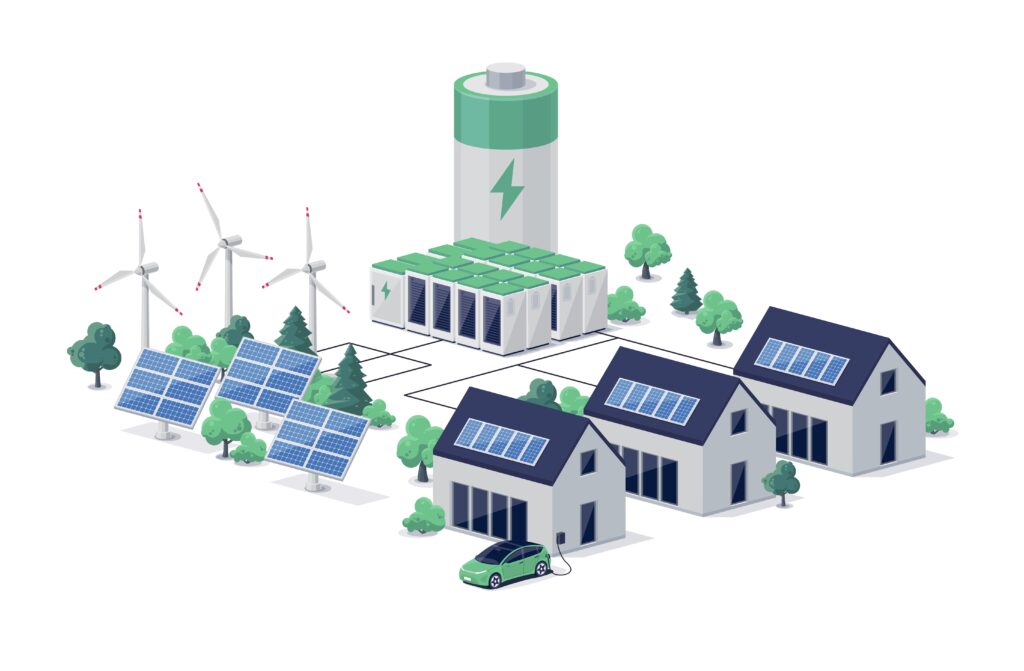A Battery Energy Storage System (BESS) is a particular type of energy storage system that can be used in homes, commercial settings or across a wide range of industries – from renewable energy providers and industrial electricity consumers to offshore drilling companies.
What is a BESS?

Essentially, a BESS is a rechargeable battery system that collects energy from different sources – that energy source might be an electricity grid or from solar power or wind energy. This system is usually backed up with a diesel genset to ensure there is no power interruption.
The BESS stores energy generated from renewable sources using battery storage technology, and the batteries then discharge that stored energy whenever it is needed. The standby genset is only used when there is not enough energy generated. It is a tried and tested method for providing backup power and ensuring a stable power supply when homes, businesses and industries need it.
Battery Energy Storage Systems have a number of benefits: they are flexible, they can easily be scaled up or down as energy needs change, they are cost-effective, and environmentally friendly as they help to reduce emissions.
More than just batteries…
Battery cells are the key component of the BESS and they are arranged in modules that form battery packs. Some BESS designs have a vast number of modules to ensure the system continues to power up and run without interruption if any of the battery modules stop working.
But there is much more to a BESS than batteries.
They have a battery management system that monitors safety and charging power of the system and is designed to avoid fires and similar risks. An inverter or power conversion feature is also an integral part of a BESS, as is an energy management system that monitors and controls the system’s energy flow.
Pick your BESS
There is no one-size-fits-all solution when it comes to choosing a Battery Energy Storage System. Different systems rely on different battery types.
One of the most popular choices are systems powered by lithium-ion batteries. Fortune Business Insights estimates around 98 per cent of the world’s BESS market share is invested in lithium-ion batteries. They are light, low maintenance, have a high storage capacity and last a long time. But they are expensive and don’t tolerate extreme temperatures and overcharging.
Other BESS options can include lead-acid batteries that are cheap and easy to recycle but are slow to charge and heavy. Nickel-Cadmium batteries are inexpensive but are not as effective and are difficult to recycle.
Increasing demand for BESS
Australia was one of the first nations in the world to harness the power of large-scale battery storage. In November 2017, Australia began operating the world’s first 100 MW battery system at Hornsdale Power Reserve in South Australia.
The US has since become home to some of the world biggest Battery Energy Storage Systems but the systems are still an integral part of industries and businesses across Australia.
Fortune Business Insights sees an ongoing rise in demand for BESS due to the drive towards low carbon energy generation to reduce greenhouse gas emissions.


